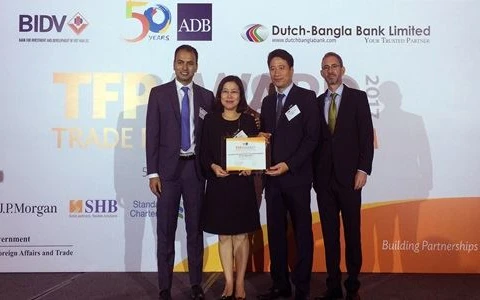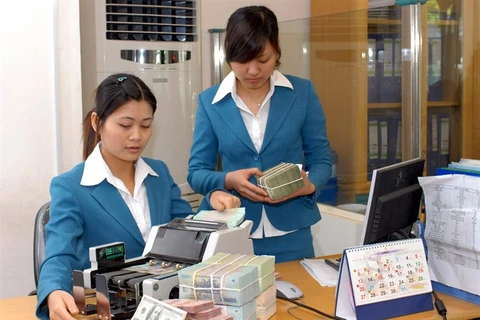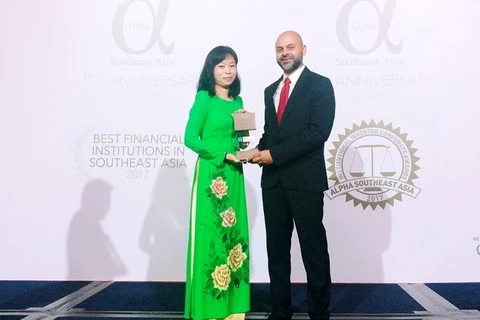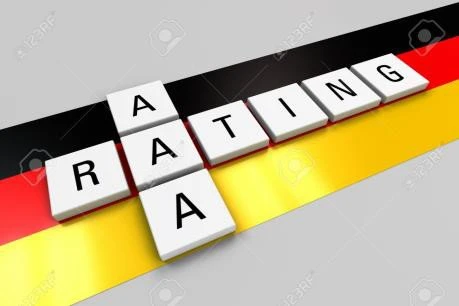 The State Bank of Vietnam has approved the extension of credit growth limits for many commercial banks to support the country’s economic growth (Photo: kienthuc.net.vn)
The State Bank of Vietnam has approved the extension of credit growth limits for many commercial banks to support the country’s economic growth (Photo: kienthuc.net.vn) Hanoi (VNA) - The State Bank of Vietnam (SBV) has approved the extension of credit growth limits for many commercial banks to support the country’s economic growth.
Vietcombank Chairman Nghiem Xuan Thanh said his bank is now able to increase credit limits for the whole of 2017 from 16 to 18 percent.
Vietinbank General Director Le Duc Tho said his bank’s credit growth quota set for this year was recently adjusted to up to 18 per cent.
The extension was also reported for many other joint stock commercial banks.
OCB General Director Nguyen Dinh Tung said the SBV permitted his bank to have a credit growth quota of 22 percent, up from the earlier 14 percent.
Credit growth limits of VIB and TPBank are now 24 percent and 20 percent, respectively, up from 16 percent set by the central bank early this year.
According to the current regulation, SBV sets credit growth limits for each commercial bank depending on the bank’s health at the beginning of the year. This was done to control credit growth of the entire banking system and support government targets.
The SBV’s move to extend credit growth limits for commercial banks is understandable as lending of the entire banking system to date this year has been positive.
According to a report from the National Financial Supervisory Commission (NFSC), credit growth of the banking system until the end of August was estimated at 11.5 percent, compared with 10.2 percent in the same period of 2016. It is forecast that the banking system will soon complete the 18 percent credit growth target set at the beginning of the year.
Thanks to the improvement in lending, many banks by the end of the second quarter had almost or even entirely used all credit room assigned by the SBV early this year. The banks, therefore, had to ask the SBV to adjust credit growth upwards to have more room to meet rising capital demand during the peak business season at the end of the year.
The Government also recently requested SBV to continue the monetary policy in the direction of lowering lending rates, at the same time raising outstanding credit to 21-22 per cent in 2017, based on credit quality and macro stability.
Together with the extension approval, SBV also instructed commercial banks to conduct scrutiny to ensure bank capital went to effective sectors, avoiding non-performing loans.
SBV noted that it is ready to supply capital to the economy; however, the terms of lending will remain strict, in accordance with legal regulations and procedures.
According to Tran Dinh Thien, Director of the Vietnam Economics Institute, raising the credit growth target to 22 percent will enable banks to have more room to expand lending at the end of the year.
However, it should be calculated with extreme caution, he said, adding that it would be very risky if credit did not flow into production and business but into sensitive business sectors, such as real estate and securities, especially at this time when the real estate and securities markets were warming up.
On the other hand, he warned that if the money continues to be injected without any positive impact on economic growth, inflation would surge.
As for liquidity of the banking system in the remaining months of the year when capital demand often rises sharply, Bao Viet Securities Company’s analysts forecast that the liquidity of the system may encounter difficulty at some point, especially during the peak period of payment demand at the end of the fourth quarter of the year.
“However, in general, we assess that this risk is not too large and mainly temporary,” the analysts stated.-VNA
VNA
























